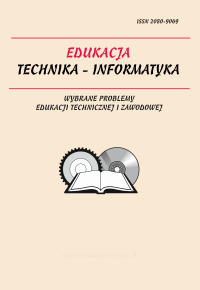Eye tracking. Nowe możliwości eksperymentalne w badaniach edukacyjnych
Słowa kluczowe:
edukacja, zainteresowanie uczniów, eye tracking, okulografia, analiza rozwiązywania problemów przyrodniczychAbstrakt
Prezentujemy zalety okulografii oraz metody eye-trackingu w badaniach edukacyjnych. W przeprowadzonym eksperymencie rejestrowaliśmy aktywność oczu studentów w trakcie rozwiązywania testu wyboru dotyczącego problemów przyrodniczych oraz podczas reakcji na zdania dotyczące ich zainteresowania fizyką, ich opinią o przydatności fizyki dla społeczeństwa oraz ich zamiarem zostania przyrodnikami. Zaprezentowano korelację pomiędzy chęcią zostania przyrodnikiem a zainteresowaniem fizyką. Na podstawie analizy aktywności oczu (mapy koncentracji uwagi) sprawdzaliśmy różne strategie rozwiązywania problemów przez dobrze i słabo przygotowanych uczniów. Odkryto niespodziewanie wysoką korelację pomiędzy średnimi czasami fiksacji podczas rozwiązywania różnych zadań przez tę samą osobę. Eksperyment został przeprowadzony w grupie 35 uczniów szkoły średniejPobrania
Opublikowane
2013-06-30
Jak cytować
BŁASIAK, W., GODLEWSKA, M., ROSIEK, R., & WCISŁO, D. (2013). Eye tracking. Nowe możliwości eksperymentalne w badaniach
edukacyjnych. Journal of Education, Technology and Computer Science, 7(1), 481–488. Pobrano z https://journals.ur.edu.pl/jetacomps/article/view/6879
Numer
Dział
PROBLEMY KSZTAŁCENIA NAUCZYCIELI
Licencja
Prawa autorskie (c) 2013 Journal of Education, Technology and Computer Science

Utwór dostępny jest na licencji Creative Commons Uznanie autorstwa – Na tych samych warunkach 4.0 Miedzynarodowe.

